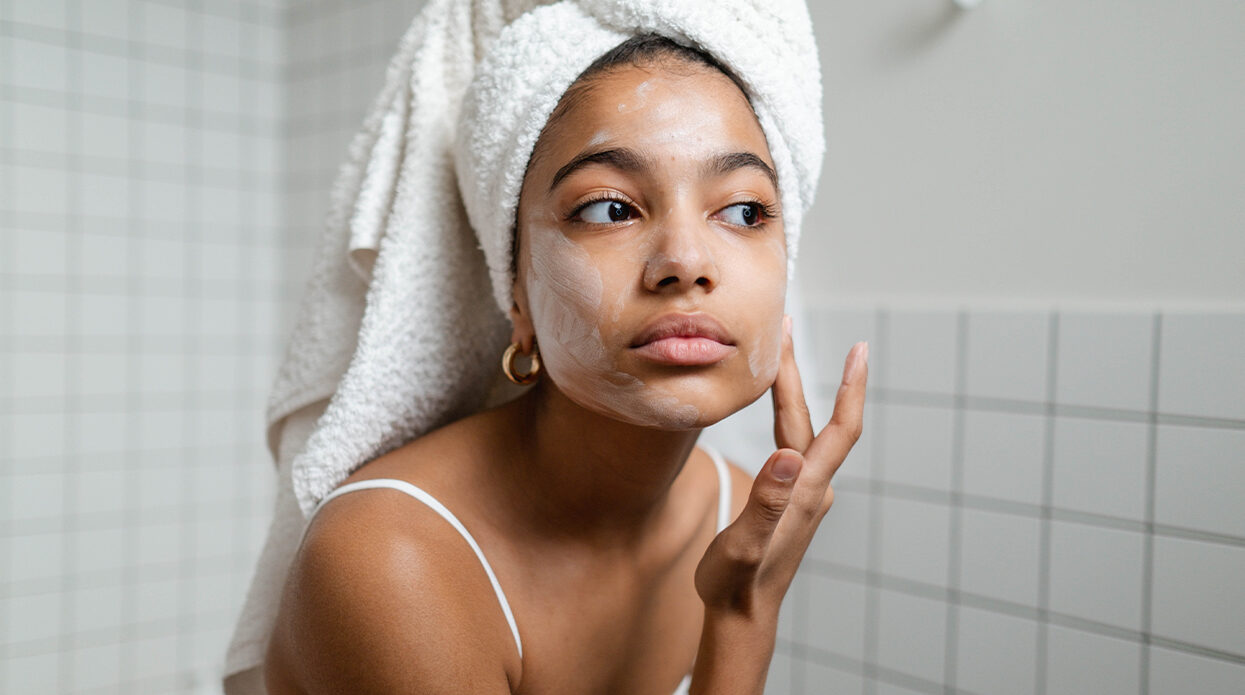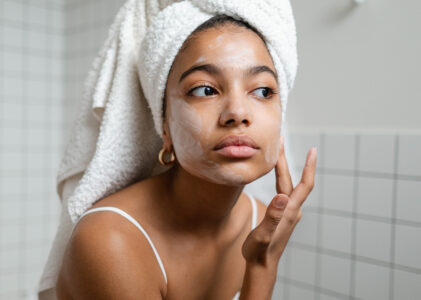Establishing a regular skincare routine is essential for maintaining healthy skin. A good routine helps to keep the complexion functioning at its best and addresses any specific concerns or problem areas. By maintaining a consistent routine, individuals can achieve a variety of benefits, including improved texture, hydration, and overall appearance of the skin. A simple routine can consist of cleansing, toning, and moisturizing, both in the morning and at night. The first step in any skincare routine should be cleansing, which removes impurities and excess oil that can clog pores. By following a regular routine, individuals can achieve a healthy, glowing complexion.
A skincare routine can also address common skin concerns such as acne, dryness, and aging. By using the appropriate products and techniques, individuals can target these issues and improve the overall health of their skin. It’s important to note that diet and lifestyle can also play a significant role in skin health. A healthy diet, regular exercise, and stress management can all contribute to a clear and radiant complexion. Simplifying your skincare routine can also be beneficial, as using too many products can irritate the skin. By following a consistent and tailored skincare routine, individuals can achieve healthy and vibrant skin.
In addition to a regular skincare routine, maintaining a healthy lifestyle can also contribute to the health of the skin. Eating a balanced diet and staying hydrated can help delay natural aging and prevent various skin concerns. A skincare routine should consist of three main steps: cleansing, toning, and moisturizing. Using gentle cleansers and toners can help balance the skin and prevent irritation. Incorporating healthy habits such as exercise and stress management can also contribute to overall skin health. By fine-tuning your skincare routine and modifying lifestyle factors, individuals can achieve healthy and radiant skin.
Identifying the right products for one’s skin type
Building an effective routine for healthy skin starts with identifying the right products for one’s skin type. Understanding one’s skin type is crucial to selecting products that will work best for them. There are five main skin types: normal, dry, oily, combination, and sensitive. Each skin type requires different products and care routines to maintain healthy skin. Once an individual has identified their skin type, they can choose products that suit their specific needs and preferences. This includes selecting products for cleansing, toning, and moisturizing, as well as any additional treatments such as serums or spot treatments.
It is important to note that patch testing is a crucial step in building an effective skincare routine. Before adding a new product to one’s routine, dermatologists recommend doing a patch test to check for potential allergic reactions. Patch testing involves applying a small amount of the product to a less noticeable area of skin, such as the inner arm, and monitoring the area for any adverse reactions. This step helps individuals avoid potential allergic reactions and ensure that the product is suitable for their skin type. It is also recommended to avoid sun exposure for 1 to 2 weeks before patch testing for more accurate results.
Building an effective skincare routine is not only about selecting the right products but also about following a consistent routine. This includes both a morning and night routine that works for one’s skin type and preferences. In addition to cleansing, toning, and moisturizing, individuals should also prioritize sun protection by wearing sunscreen daily. By following a consistent routine and using products that are suitable for their skin type, individuals can maintain healthy and glowing skin.
Building a personalized skincare routine
Building an effective skincare routine is essential for maintaining healthy skin. The first step in creating a personalized routine is to determine the necessary steps for your skin type. Generally, a skincare routine consists of three main steps: cleansing, toning, and moisturizing. Cleansing involves washing your face to remove dirt, oil, and makeup. Toning helps balance the skin’s pH levels and prepares it for the next steps in the routine. Moisturizing helps keep the skin hydrated and protected.

Once you have determined the necessary steps for your skin type, it is important to create a morning and nighttime routine. In the morning, start with a gentle cleanser to remove any impurities that accumulated overnight. Follow with toner, serum, eye cream, spot treatment (if necessary), moisturizer, and sunscreen. In the evening, repeat the same steps, but replace sunscreen with face oil to help nourish and repair the skin overnight.
In addition to a daily routine, incorporating weekly treatments can help improve the overall health of your skin. Consider visiting an esthetician for more intensive treatments such as facials, microdermabrasion, and microneedling. Additionally, exfoliating once a week with a gentle scrub can help remove dead skin cells and promote cell turnover. Lastly, don’t forget to protect your skin from the sun’s harmful UV rays by applying a broad-spectrum sunscreen with at least SPF 30 every day. By following these steps, you can build an effective skincare routine that will help you achieve healthy and glowing skin.
Sticking to a routine and adapting it as needed
Sticking to a consistent skincare routine is essential for maintaining healthy skin. The right skincare formula should cleanse the skin without stripping it of essential oils, and exfoliating scrubs should only be used once a week to avoid damage to the skin. A good skincare routine includes cleansing, toning, and moisturizing, with each step tailored to an individual’s skin type and concerns. It is important to wash your face twice a day to remove dirt and oil buildup, and to use a hydrating toner to balance the skin. By following a consistent skincare routine, individuals can build and maintain resilient skin while working on troublesome areas, rebalancing the skin, and using targeting ingredients to improve overall skin health.

Adjusting a skincare routine as the skin changes is also crucial for maintaining healthy skin. As skin ages, it may require different products or techniques to maintain its health and appearance. For example, individuals with dry or sensitive skin may need to wash their face only at night and rinse with water in the morning to avoid stripping the skin of essential oils. It is important to be patient and persistent in finding the right skincare routine that works for an individual’s skin type and concerns. Eating a healthy and balanced diet and exercising can also contribute to maintaining youthful-looking skin.
In conclusion, building an effective routine for healthy skin involves sticking to a consistent skincare routine tailored to an individual’s skin type and concerns. It is important to adjust the routine as the skin changes and to be patient and persistent in finding the right products and techniques that work for the skin. By following a healthy skincare routine, individuals can maintain resilient and youthful-looking skin.

